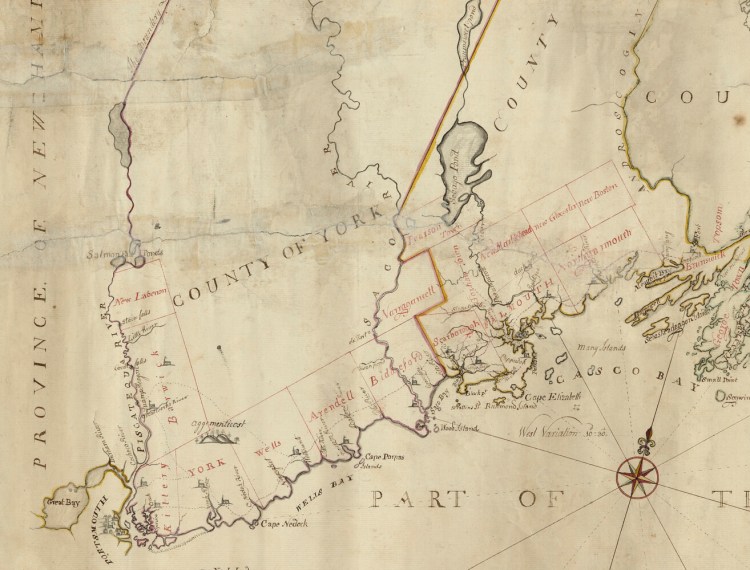June 19, 1760: Most of York County, which had comprised all of Maine since the late 17th century, is carved into sections to create Cumberland and Lincoln counties. Those new counties later will be subdivided to create additional counties.

Cumberland County, with a population of 281,674 in 2010 and home to many of the state’s larger communities, is the most populous of Maine’s 16 counties. Portland is the county seat and Maine’s largest city.
Cumberland County is home to Bowdoin College in Brunswick; retailer L.L. Bean, one of the state’s largest employers, in Freeport; major campuses of the University of Southern Maine and the University of New England, Cross Insurance Arena, the Portland Museum of Art, the Portland Expo, and Hadlock Field, home of the Portland Sea Dogs baseball team, all in Portland; and Sebago Lake, Maine’s second-largest lake.
Lincoln County, with 34,457 people, is the fourth-smallest in population in 2010. Its county seat is Wiscasset.
The mid-coastal county’s attractions include Pemaquid Point Light in Bristol; the Wiscasset, Waterville & Farmington Railway Museum in Alna, the Maine State Aquarium in Boothbay Harbor, and the Maine Botanical Gardens and the Boothbay Railway Village in Boothbay.
June 19, 1794: Attendees at a convention in Portland approve a committee report concluding that Maine’s separation from Massachusetts would reduce the proposed state’s tax burden significantly. The conclusions are sent to all towns in the District of Maine but fail to generate much enthusiasm among residents.
Maine eventually achieves statehood in 1820, largely because of the War of 1812 and other events that happen after the 1794 convention.
June 19, 1936: Twelve children from four rural schools on an outing to celebrate the end of the school year drown when the boat they are in capsizes on Gardner Lake, near East Machias.
It was the last boat trip of the day. Three other children and a 70-year-old man are rescued.
One of the children, Miriam Kelley (1926-2018), escapes death when high school student Wyman Ramsdell grabs her by the hair to hold her head above water. In the early 21st century, Kelley, by then known by her married name, Miriam Doherty, and a teacher in the Lubec school system for 26 years, becomes the Gardner Lake accident’s last living survivor.

The Deer Isle-Sedgwick Bridge, spanning Eggemoggin Reach between Sedgwick and Deer Isle. Historic American Buildings Survey photo courtesy of the Library of Congress
June 19, 1939: The Deer Isle-Sedgwick Bridge is dedicated, 16 months after construction began, and opens Dec. 31 of that year. It is the first fixed link across Eggemoggin Reach between the mainland and Little Deer Isle.
The bridge sustains severe damage when unusually intense storms in the winter of 1942-43 cause the decking to wobble, similar to what happened to the Tacoma Narrows Bridge in Washington state, which collapsed in 1940 in high winds shortly after opening. As a result, the Maine bridge is strengthened extensively during repairs.
Presented by:

Joseph Owen is an author, retired newspaper editor and board member of the Kennebec Historical Society. Owen’s book, “This Day in Maine,” can be ordered at islandportpress.com. To get a signed copy use promo code signedbyjoe at checkout. Joe can be contacted at: jowen@mainetoday.com.
Note: This article was updated at 12:45 p.m. June 19 to correct the spelling of Gardner Lake.
Send questions/comments to the editors.



Success. Please wait for the page to reload. If the page does not reload within 5 seconds, please refresh the page.
Enter your email and password to access comments.
Hi, to comment on stories you must . This profile is in addition to your subscription and website login.
Already have a commenting profile? .
Invalid username/password.
Please check your email to confirm and complete your registration.
Only subscribers are eligible to post comments. Please subscribe or login first for digital access. Here’s why.
Use the form below to reset your password. When you've submitted your account email, we will send an email with a reset code.